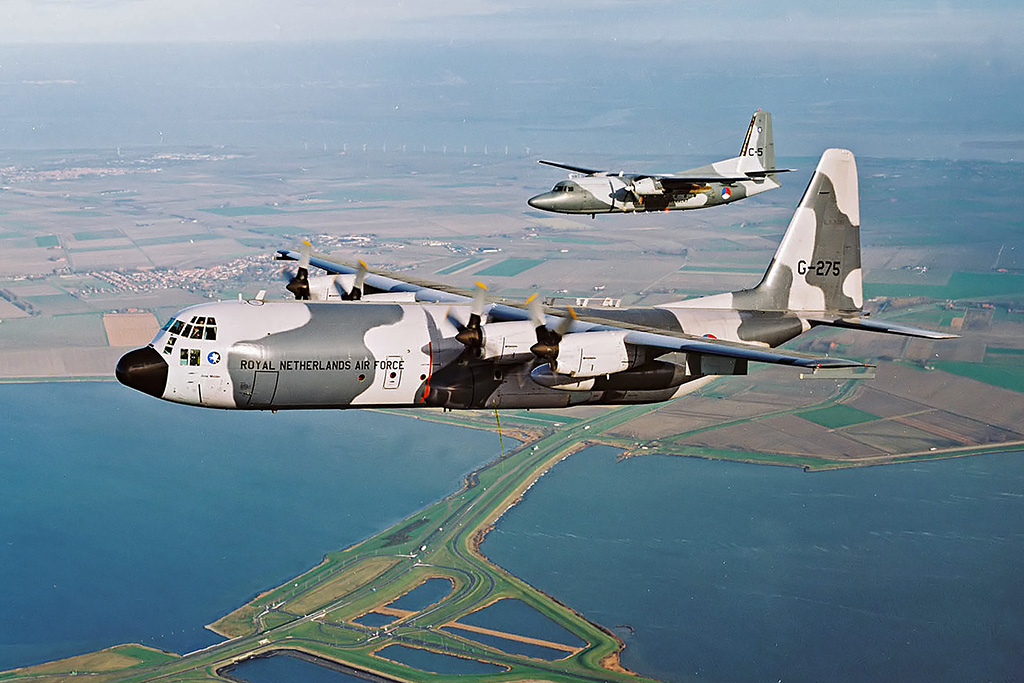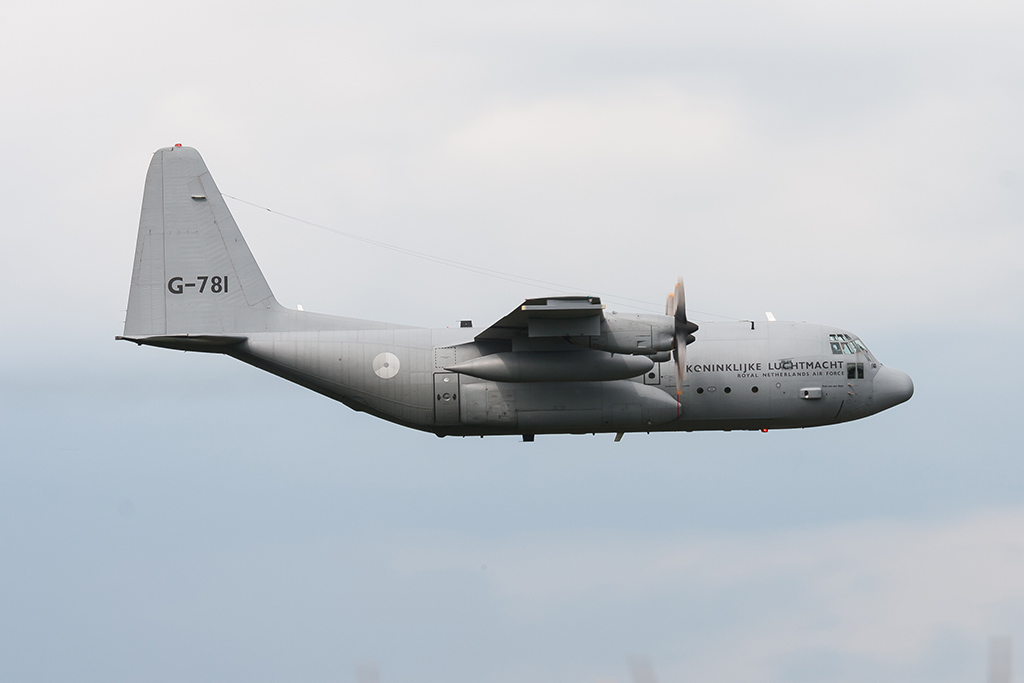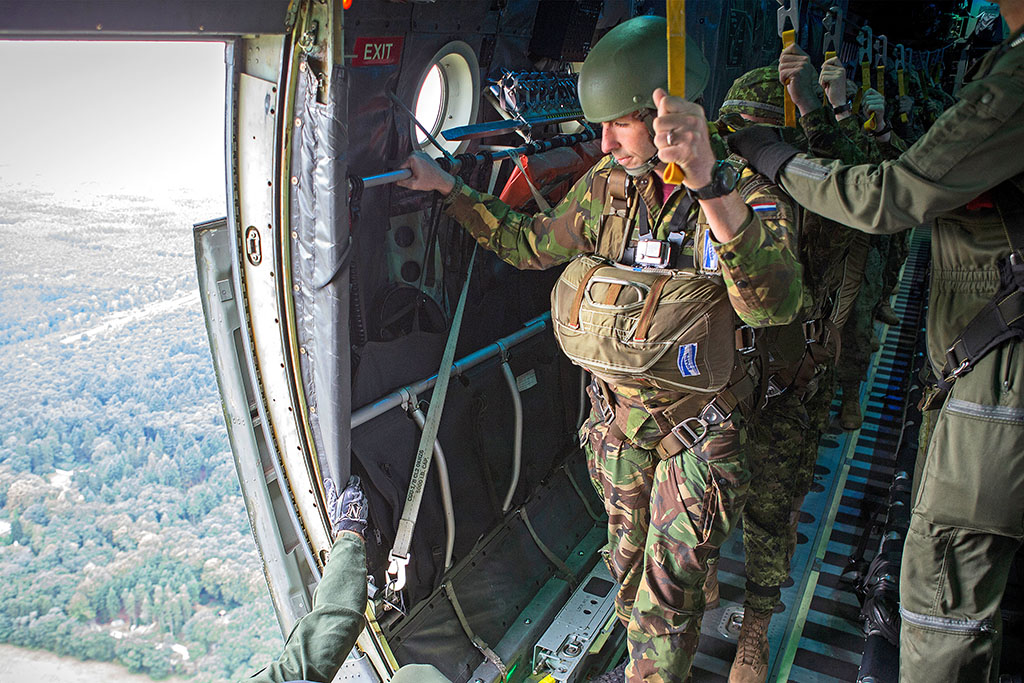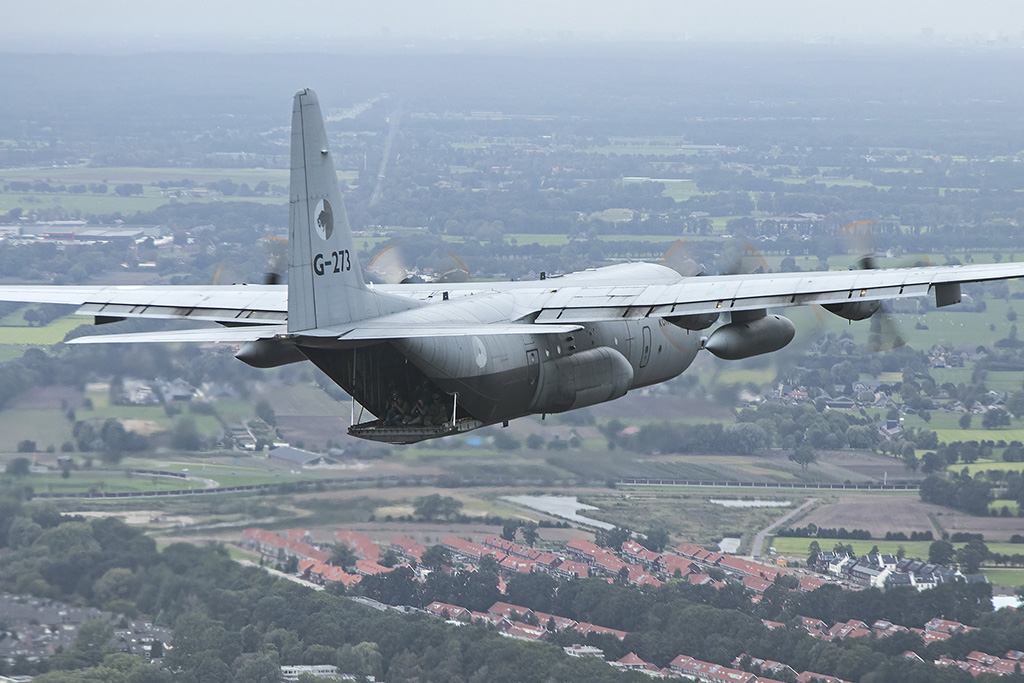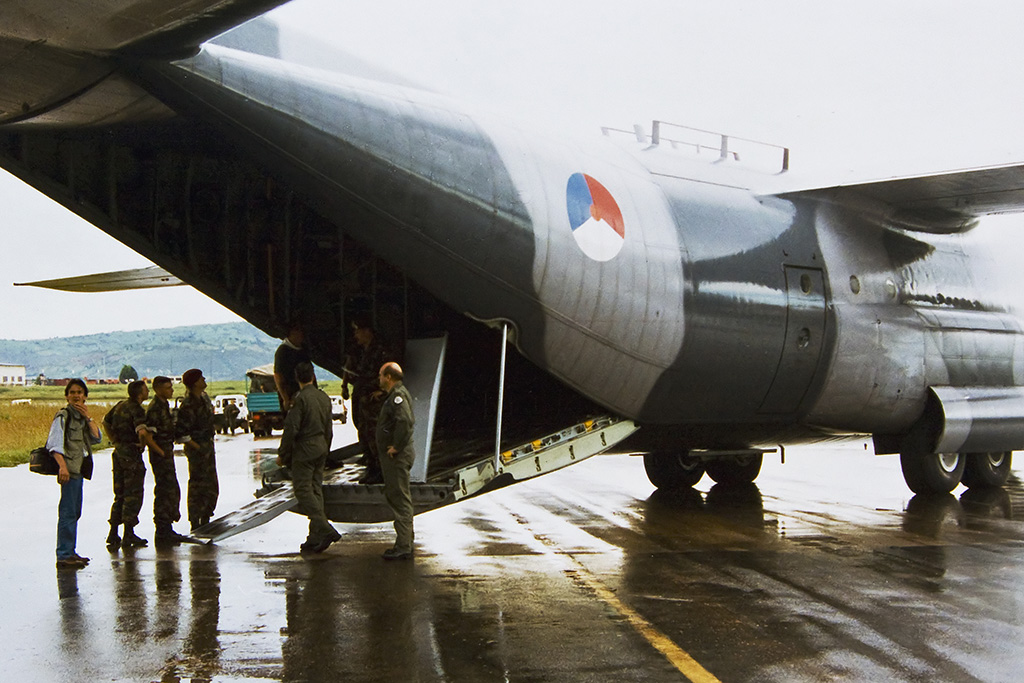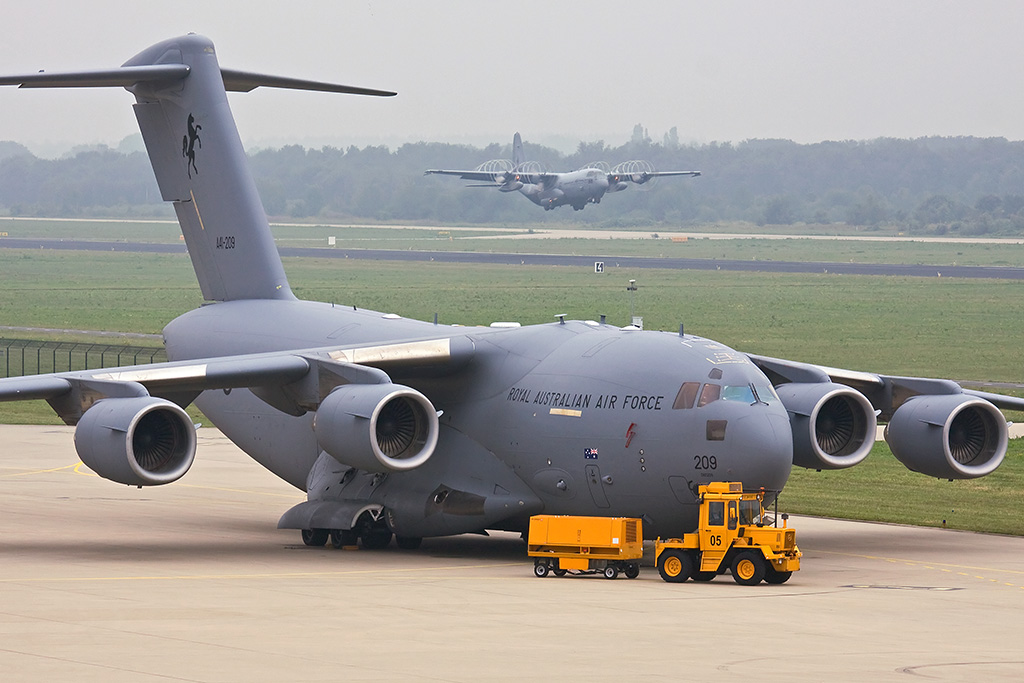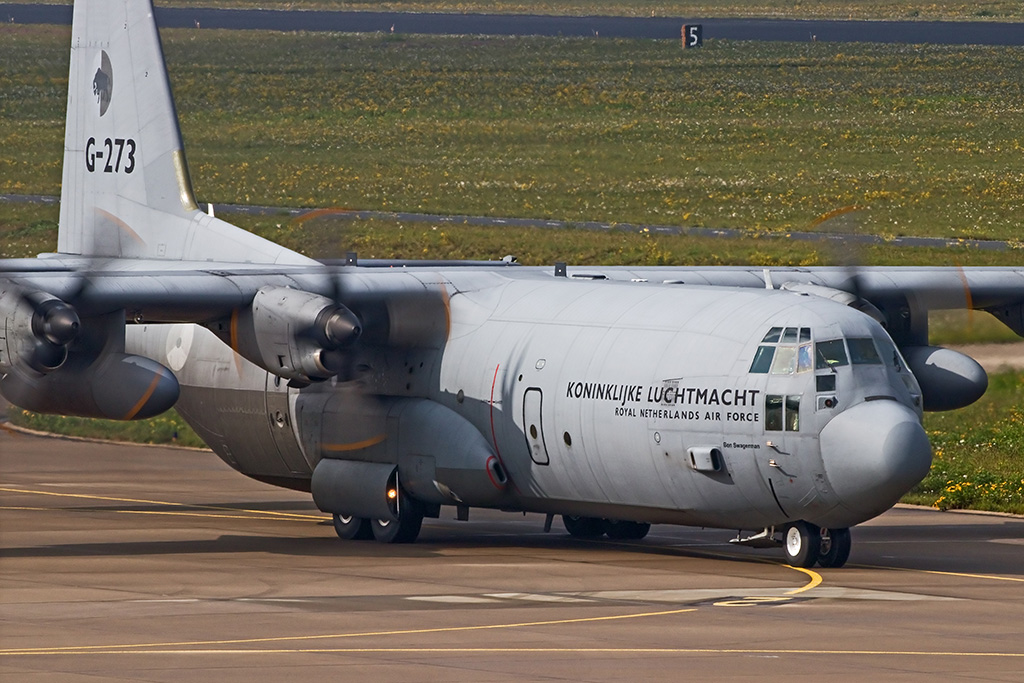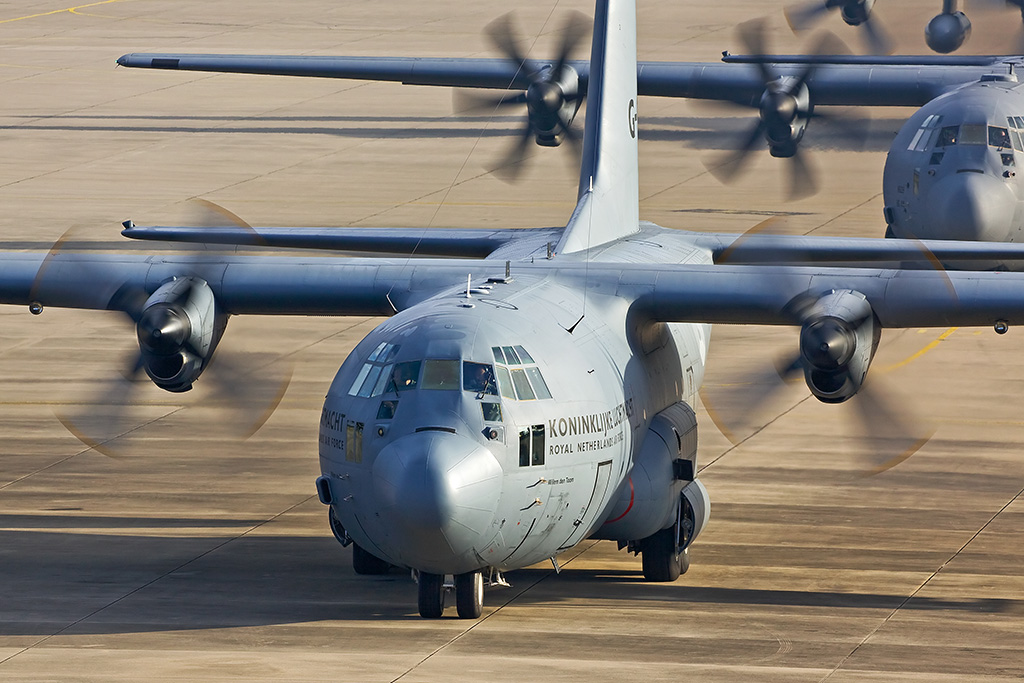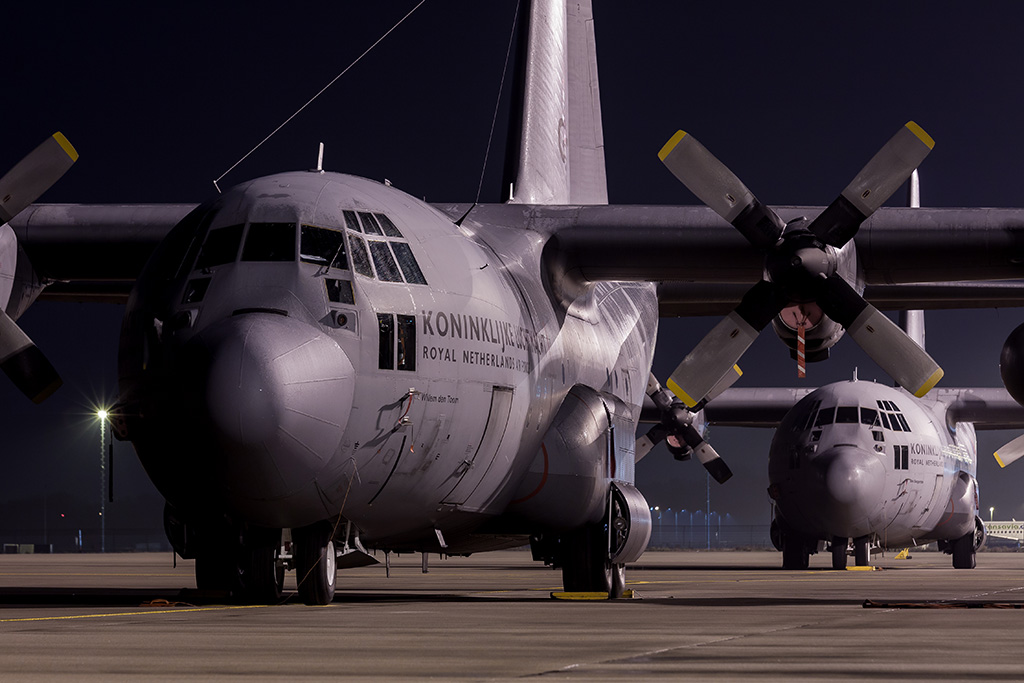Besides Poland and The Netherlands over 60 other nations worldwide operate the Lockheed C-130 Hercules transport aircraft in over 40 variants. The first two of the medium-sized tactical transport aircraft initially came into service with the Royal Netherlands Air Force (RNLAF) in 1994 and were stationed at Eindhoven Air Base (AB) with the 334 Squadron. Since October 2007 the 336 Squadron operates the RNLAF C-130 fleet, consisting out of two C-130H-30s and two C-130Hs. Given the variety of tasks the unit performs with their four aircraft, one can respectfully say that the unit and the Hercules are the workhorses of the RNLAF.
Implementation
The history of the current RNLAF 336 Squadron is relatively short in comparison to other active RNLAF squadrons. The squadron celebrated its 10-year anniversary in October 2017. But, the unit was actually founded and implemented within the RNLAF in September 1961.
Ever since The Netherlands gave up their colonial rule over Indonesia and Indonesia became an independent state in 1949, both countries had a conflict about the colony Dutch New Guinea. The reason for this conflict was that in the sovereignty transfer from The Netherlands to Indonesia, the mentioned colony wasn't stipulated that it would remain under Dutch colonial rule and Indonesia therefore claimed it. The conflict led to a build-up of Dutch troops in the region which had to protect the Dutch inhabitants as well as to prevent tensions rising too high. The new implemented 336 Squadron was assigned to transport personnel and goods for and to the Royal Netherlands Navy (RNN) units in Dutch New Guinea with DC-3 Dakota transport aircraft. Shortly after The Netherlands eventually acknowledged that New Guinea belonged to Indonesia by signing the Treaty of New York on August the 15th of 1962, the 336 Squadron was de-activated.
Re-implementations
On the 1st of August 1981, the 336 Squadron was re-implemented again. Stationed at Hato International Airport (IAP) at Curaçao, the unit was assigned with Search-And-Rescue (SAR) missions, surveillance against smugglers and detection of oil pollution in the Caribbean Sea. The squadron performed these tasks operating two Fokker F-27 Marine Patrol Aircraft. The two planes carried soldiers from one ABC-isle (ABC-Islands: Aruba, Bonaire und Curacao) to another and participated in different oversea exercises. When their task was taken over by P-3C Orion aircraft of the Royal Netherlands Navy, the 336 Squadron was de-activated again on the 6th of July 2000.
The 3rd implementation of the squadron took place on the 23rd of October 2007. After The Netherlands Minister of Defense (MoD) decided to buy two additional Hercules transport aircraft (two already were operated by the 334 Squadron since 1994), The Netherlands MoD re-assigned and divided the RNLAF transport aircraft from one into two squadrons. The two C-130 transport aircraft were assigned to the 336 Squadron. The other aircraft (KDC-10, Fokker 50, Fokker 60 and G-1159 Gulfstream) remained with the existing 334 Squadron.
The fleet
Partly due to the fall of the Berlin Wall in 1989 The Netherlands MoD concluded that the RNLAFs Fokker F-27 fleet needed replacement. It was foreseen that future politically and military developments would occur in places that didn't match the range and transport capabilities of the F-27 which was in service since 1960. The RNLAF needed midsized tactical transport aircraft to be able to address the RNLAFs commitment when it was required. Therefore, the MoD purchased two C-130Hs in 1992. To be able to carry more bulk cargo, the aircraft's length was stretched to 34,4 meters. The RNLAF 334 Squadron received the first stretched Hercules, designated as C-130H-30 on the 14th of February 1994. The second C-130H-30 entered RNLAF service on the 2nd of October 1994. From the several military deployments and commitments during the years that followed, The Netherlands MoDs concluded that the RNLAF needed two additional C-130s. These C-130Hs, with a standard length of 29,8 meters, were bought in 2004 from the United States Navy and entered RNLAF service in 2010.
Today, the 336 Squadron prepares and conducts tactical air transport all over the world. The four C-130s offer a wide range capacity of more than 8,000 km and can carry up to 20 tons of freight. Its STOL-capabilities (Short Take Off and Landing) allow the Hercules to land almost everywhere, facing difficult conditions such as remote areas with few infrastructures. The cockpit of the C-130s is fully digital since 2012, increasing situational awareness and decreasing work pressure. The C-130s don't carry offensive weapon systems. But, equipped with the Missile Warning System the Hercules crew can protect the aircraft by using flares against heat-detecting rockets.
Military deployments
In 2019 the C-130 celebrates its 25th year of service within the RNLAF. During this period the RNLAF participated in many military crisis operations. A few examples.
In 1995 and 1996 the C-130 supplied RNLAF and other NATO troops in Bosnia (SFOR), flying from Italy. During the Kosovo crisis in 1999, the C-130 aircraft proved their worth by supplying Dutch units in the area. They also brought First Aid supplies for Kosovar refugees to Albania. Between 2001 and 2011, the Hercules aircraft and their crews participated in several phases of the war against terrorism in Afghanistan. One or more of the transport aircraft flew from several airports, like Trabzon Airport (Turkey), Manas Airport (Kyrgyzstan), Khwaja Rawash Airport (Kabul, Afghanistan) and Camp Mirage (near Dubai, United Arab Emirates). In 2008 one of the 336 Squadron's workhorses operated as part of a French led EUFOR-mission, which was aimed at creating stability and safety in the region between Chad and Cameroon. The current commander of the 336 Squadron, lieutenant-colonel pilot Jorrit 'Winnie' de Gruijter says: "Today the RNLAF is active in Jordan, to participate in the war against terrorism from ISIS (Islamic State of Iraq and al-Sham) with several F-16s (Air Task Force Middle East). Even though the 336 Squadron isn't part of the deployment, our C-130 is used regularly to supply our troops."
In between military deployments and other operations, crews have to be trained. Besides courses in the latest techniques, the 336 crews participate in several international exercises, such as the European Tactical Airlift Program-Training. During this exercise the procedures that the participating airlift crews use to operate their tactical transport aircraft are harmonized and standardized to improve interoperability within NATO-context.
Humanitarian efforts
The RNLAF C-130 is obviously primarily meant to be used for military operations. But, during the last 25 years the 334 and 336 Squadron proved the versatility of its transport aircraft and its crews by using the Hercules also in humanitarian operations. The list of deployments in which the RNLAF participated is too long to mention every single one. Some of the most striking operations are elaborated on hereafter.
Silver Back and Provide Care
Already within two months after entering RNLAF service, the Hercules was deployed to Africa to be a part of the United Nations' Operation Silver Back (supporting refugees of the civil war between the Hutu and Tutsi tribes in Rwanda and Burundi) and the following Operation Provide Care in 1994. John 'Lost' van Noorloos, a 1st lieutenant C-130 Instructor Flight Engineer, participated in both. Back then John was a 1st Sergeant C-130 loadmaster. He says: "I remember well our missions to the city of Goma. It was the first time for me to be under enemy fire. It was also the first time I witnessed human despair on a large scale at close range. The human suffering I saw was horrible. Many refugees were sick and exhausted from cholera and dehydration and I can still remember the air of the many deceased people. As you can imagine, the combination of all these experiences to say the least were very impressive to me and my colleagues." The operation was aimed at providing emergency care to Hutu refugees who fled from Tutsi rebels and settled in camps around the city of Goma in Zaire. Operation Providing Care is without a doubt one of the most unnerving and horrifying sights of human suffering RNLAF personnel ever witnessed.
The RNLAF C-130 crew managed to evacuate many refugees and supplied the camps with tents, blankets, medication, water and food. Sometimes with great risk for their own safety. Major-pilot (retired) Lex 'Sexy' Schoenmaker remembers another specific story: "We were asked to assist New Zealand with their transport runs to Bukavu. From the intel we received, it appeared that the local runway was long enough. However, we should try to avoid some gravel at the end of the runway. Before we landed, we performed a low-level reconnaissance pass to check out the runway which from the air seemed to be fine. The opposite turned out to be true. We did avoid the gravel, but the runway itself was recently renewed and large pebbles of granite were scattered all over it. This resulted in severe damages to several antennas, navigation lights and drains. We decided that Bukavu was too dangerous to stay overnight waiting for a technical team and we flew back to Mombasa. After performing some emergency repairs, we flew to Brussels (Belgium) without stopovers." This 14,5 hours flight was the longest flight without refueling flown with the RNLAF C-130 since.
Natural disasters
Since the nineties, the RNLAF operates transport aircraft with a greater range than the aircraft she had in service before. The Netherlands therefore was able to offer their help after natural disasters occurred, anywhere in the world. With the Hercules the RNLAF supported the United Nations, the Red Cross and other organizations after the earthquakes in Iran (1997) and Afghanistan (1998) occurred.
The C-130 was also deployed to the Caribbean area several times after destructive hurricanes like Luís (1995), Mitch (1998) and Irma (2017). The 336 Squadron commander remembers: "On the 6th of September Irma struck the islands Saint-Maarten, Saba and Saint-Eustasius. As soon as we received the formal requests from the three islands, we immediately responded positively. Already the next day, one C-130 and one KDC-10 departed to the area to bring in relief supplies and personnel." He continues: "I will never forget the story that one of our pilots invited evacuees into the C-130 cockpit to explain in general how the aircraft is flown. His personal attention to the evacuees was visibly well appreciated, despite the circumstances they were in." Major Martin Tennekes, Public Affairs Officer at Eindhoven AB and also was deployed to Saint-Maarten as such, adds: "Everyone within the RNLAF is dedicated to take part in humanitarian operations. As a soldier, but mostly and simply as a human being. Also, our ground crew of the 940 Squadron, or RNLAF Cargo, deserves a huge compliment. You have to imagine that the loading and unloading of the aircraft is very heavy work. Especially during the tropical weather conditions, they were in over there."
MH17
The 17th of July 2014 marks a black page in Dutch history. Flight MH17 of Malaysian Airlines was shot down and crashed near the Ukrainian city of Kharkov, killing all 298 passengers of which 196 were Dutch. A ten-month complex repatriation mission and a criminal investigation followed.
Together with the Royal Australian Air Force, the 336 Squadron brought the mortal remains back home. The first C-130H and Australian C-17A arrived at Eindhoven AB on the 23rd of July. With respect and military ceremonial honor, each coffin was carried from the aircraft into hearse vehicles, in the meantime watched by relatives, friends and dignitaries. At the time, the commander of Eindhoven AB colonel-pilot Johan van Soest said to Dutch television that it was a hard, sometimes very emotional, but highly rewarding job to be involved in the repatriation mission. The way the Dutch government and everyone at Eindhoven AB have dealt with the repatriation has received much praise and respect from the Dutch society. As a reminder of the disaster, on the 17th of July 2017 a national monument was unveiled at Vijfhuizen Park, near Schiphol IAP. Another monument, a statue called 'The imagination', was unveiled near the entrance of Eindhoven AB on the 24th of March 2018.
The unit's future
Germany, Luxembourg, Norway and the Netherlands have jointly ordered seven Airbus A330 Multi Role Tanker Transport (MRTT) aircraft. Two of these will replace the capacity of the current two RNLAF KDC-10 aircraft from 2020 onwards, as these will be taken out of service. The four partners are part of the so-called Multinational MRTT Unit (MMU). "This development affects the organization of Eindhoven AB, as well as The Netherlands MoDs intent to restructure the RNLAF into a command structure will do. Our air force will be organized into a command structure. Next to the already existing Defense Helicopter Command, an Air Mobility Command, a Fighter Command and a Special Operations Command will be formed", says De Gruijter. He continues: "Given the fact that several years ago our four Fokker F-50s and four Fokker F-60s were phased out and sold, as well as the fact that the new A330s will resort with the MMU and are owned by NATO, it's not efficient any more to have two transport squadrons at Eindhoven AB. Most likely the 334 Squadron will therefore be de-activated, leaving the 336 Squadron the only fixed wing transport unit within the RNLAF. We will see what choices will be made in the coming years, but the final version of the plans should be implemented from 2021 onwards." Being asked about possible consequences for the Hercules fleet, Winnie says: "Yes, these changes can also affect our fleet. Our aircraft are technically and digitally up to date and the Center Wing Box will be replaced on short term. But given the airframe's age, the focus on the MMU and restructured RNLAF later on could justify replacement of our current fleet for a yet to be determined type, depending on the tasks the RNLAF focusses on in the future."
Sudore ac pulvere
The 336 Squadron's motto is 'Sudor ac pulvere'. This Latin phrase translates into 'In sweat and dust'. "No other motto is better applicable for the squadron than this one", says the squadron commander. "We are in service of and in service for the Netherlands and its population. Our drive is to offer necessary assistance and we do this proudly, efficiently and anywhere in the world, in almost every circumstance. Military as well as humanitarian. I'm confident we will continue to do so and I'm proud of our job and my colleagues." Cleary, the last 25 years, of which the 336 Squadron operated the C-130 for 10 years, were an intensive, busy, sometimes emotional and above all rewarding period for the unit.
This article was also published in the Dutch magazine 'Piloot & Vliegtuig, 10-2018' and the Polish magazine 'Lotnictwo Aviation International, 01-2019'.

